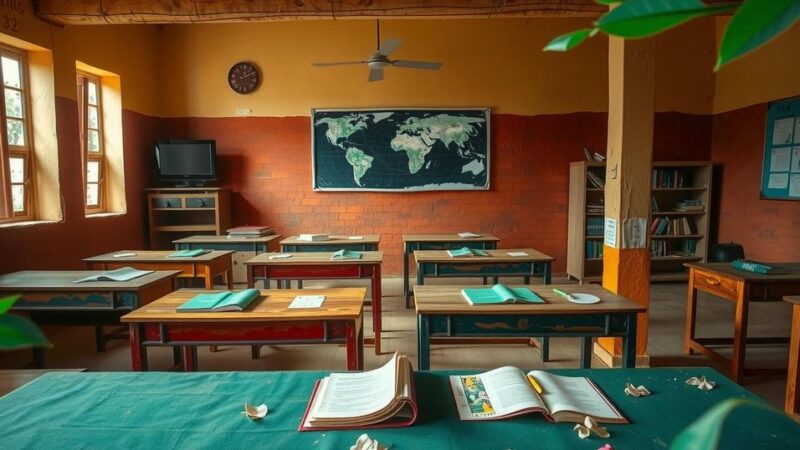A study reveals that climate change is significantly increasing the frequency and intensity of heatwaves in South Sudan, adversely impacting women and girls. Ongoing political instability exacerbates the situation, with recent temperatures reaching 40 degrees Celsius. The government has closed schools and urged residents to stay indoors. Climate scientists emphasize that these extreme conditions are becoming more common and present grave challenges for the nation.
A recent study has determined that man-made climate change has significantly increased the likelihood of the heatwave currently impacting South Sudan. This phenomenon is exacerbating existing conditions, particularly affecting women and girls who bear the brunt of rising temperatures. Since its independence in 2011, South Sudan has encountered ongoing insecurity, rendering it ill-prepared to handle escalating environmental crises.
The current heatwave coincides with a resurgence of political instability, raising concerns about the fragility of a 2018 peace agreement that ended a prolonged civil war. According to data from the Intergovernmental Authority on Development (IGAD), recent temperatures have soared to 40 degrees Celsius (104 degrees Fahrenheit) in various regions. Consequently, the government has mandated school closures in the capital due to alarming reports of students collapsing amid the heat.
Research from the World Weather Attribution network indicates that climate change has made these extreme temperature events at least 2 degrees Celsius hotter and ten times more likely. Kiswendsida Guigma, a climate scientist involved in the study, remarked on the increasing difficulty of living conditions in South Sudan, a nation deeply challenged by economic hardship and political crises.
The study highlights that many residents, especially women, are compelled to work outdoors despite the oppressive heat, with inadequate housing and minimal access to cooling alternatives such as air conditioning. Limited access to safe drinking water and electricity—reaching only 8.4 percent in 2022—further complicates daily survival.
Elizabeth Lodou Lochapio, a local resident, illustrated the plight of women who are forced to endure the heat for their families’ survival. She pointed out the difficulties of remaining productive when temperatures peak between noon and 3 PM. Sarah Kew, another researcher from the Netherlands Meteorological Institute and contributor to the study, noted that extreme heat events that were once rare are becoming increasingly frequent, presenting serious challenges for South Sudanese society. Projections indicate that the oppressive heat is likely to continue into March, compounding existing concerns for the region’s residents.
The study underscores the profound impact of climate change on South Sudan, particularly regarding the exacerbation of current socio-economic challenges. Women and girls are disproportionately affected by heatwaves, facing additional burdens in their daily tasks under extreme conditions. As temperatures rise and instability persists, urgent attention is required to mitigate the effects of climate change and support vulnerable populations in South Sudan.
Original Source: www.webstercountycitizen.com






